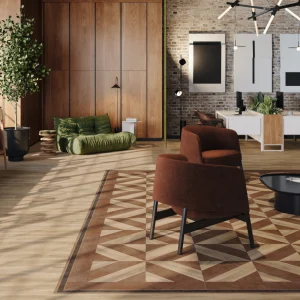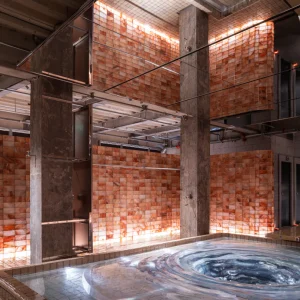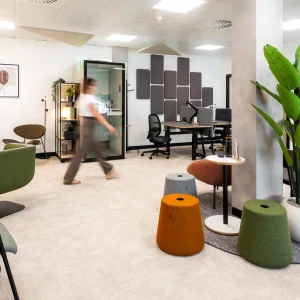The George W. Bush Presidential Center is a future complex that will include former President George W. Bush’s presidential library and museum, the George W. Bush Policy Institute, and the offices of the George W. Bush Foundation. The facility will occupy roughly 25 acres on the SMU campus in Texas. The center has been conceived as a modern brick and limestone structure that complements the American Georgian character of the SMU campus, set within a low-maintenance, quintessentially Texas landscape.
According to the New York-based Robert A.M. Stern Architects, recreating the Oval Office is one of the biggest challenges in the construction of the George W. Bush Presidential Center. Originally created in 1909, the oval office is the office of the president of the US, which is decorated to suit the taste of each president.
The building and landscape are integrated, with numerous links between indoor and outdoor spaces. Visitors to the museum will enter the building through Freedom Hall, a large, light-filled open space that will tie the different aspects of the museum experience together. The opposite side of Freedom Hall will house the temporary exhibit space, a ceremonial courtyard and a café. The Institute portion of the building will include a conference center with a 364-seat auditorium with simultaneous translation and broadcast capabilities, along with numerous offices for scholars and a presidential suite for receptions and other functions. The Institute will have its own entrance on axis with Binkley Avenue.
The replica of the Oval Office as it was during President Bush’s tenure will be complete with an outdoor Texas Rose Garden that mimics the proportion and scale of the White House Rose Garden. The architects have captured the spatial relationship and interaction between the Oval Office and the Rose Garden. The officials are planning to enliven an exact replica of the Oval Office mimicking all the details such as trim profiles, wall paneling, fireplace design and even the shapes of the scalloped coves over the shelving in the office.
The three-story, 200,000 square feet presidential library has been designed to attain the U.S. Green Building Council’s (USGBC) Leadership in Energy and Environmental Design (LEED) – Platinum rating. Green elements that are integrated in the structure are hot-water panels and photovoltaic panels on the roof; large underground cisterns to catch storm water; and the use of Texas limestone, woods and other materials sourced within a 500-mile radius of the site.
The construction work is due to be started in November 2010, with the completion expected within two years.





